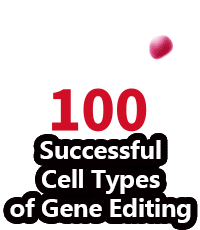Gene therapy reverses heart failure in mouse model of Barth syndrome
Barth syndrome is a rare metabolic disease in boys caused by mutation of a gene called tafazzin or TAZ. It can cause life-threatening heart failure and also weakens the skeletal muscles, undercuts the immune response, and impairs overall growth. There is no cure or specific treatment, but new research at Boston Children's Hospital suggests that gene therapy could prevent or reverse cardiac dysfunction.
The findings, involving new mouse models of Barth syndrome, were published today "Online First" by the journal Circulation Research.
In 2014, to get a better understanding of Barth syndrome, William Pu, MD, and colleagues at Boston Children's Hospital collaborated with the Wyss Institute to create a beating "heart on a chip" model of Barth syndrome. The model used heart-muscle cells with the TAZ mutation, derived from patients' own skin cells. It showed that TAZ is truly at the heart of cardiac dysfunction: the heart muscle cells did not assemble normally, mitochondria inside the cells were disorganized, and heart tissue contracted weakly. Adding a healthy TAZ gene normalized these features.
But to truly capture Barth syndrome and its whole-body effects, Pu and colleagues needed an animal model. "The animal model was a hurdle in the field for a long time," says Pu, director of Basic and Translational Cardiovascular Research at Boston Children's and a member of the Harvard Stem Cell Institute. "Efforts to make a mouse model using traditional methods had been unsuccessful."
Modeling Barth syndrome in mice
Recently, however, the lab of Douglas Strathdee's group at the Beatson Institute for Cancer Research in the U.K. overcame the challenge and created animal models of Barth syndrome. In new work, Pu, research fellow Suya Wang, PhD, and colleagues characterized these "knockout" mice, which came in two types. In one, the TAZ gene was deleted in cells throughout the body; in the other, just in the heart.
Most mice with the whole-body TAZ deletion died before birth, apparently because of skeletal muscle weakness. But some survived, and these mice developed progressive cardiomyopathy, in which the heart muscle enlarges and loses pumping capacity. Their hearts also showed scarring, and, similar to human patients with dilated cardiomyopathy, the heart's left ventricle was dilated and thin-walled.
Mice lacking TAZ just in their cardiac tissue, which all survived to birth, showed the same features. Electron microscopy showed heart muscle tissue to be poorly organized, as were the mitochondria within the cells.
Pu, Wang, and colleagues then used gene therapy to replace TAZ, injecting an engineered virus under the skin (in newborn mice) or intravenously (in older mice). Treated mice with whole-body TAZ deletions were able to survive to adulthood. TAZ gene therapy also prevented cardiac dysfunction and scarring when given to newborn mice, and reversed established cardiac dysfunction in older mice -- whether the mice had whole-body or heart-only TAZ deletions.
Getting the gene in
Further tests showed that TAZ gene therapy provided durable treatment of the animals' cardiomyocytes and skeletal muscle cells, but only when at least 70 percent of heart muscle cells had taken up the gene.
That's where the challenge will lie in translating the results to humans. Simply scaling up the dose of gene therapy won't work: In large animals like us, large doses risk a dangerous inflammatory immune response. Giving multiple doses of gene therapy won't work either.
"The problem is that neutralizing antibodies to the virus develop after the first dose," says Pu. "Getting enough of the muscle cells corrected in humans may be a challenge."
Maintaining populations of gene-corrected cells is another challenge. While levels of the corrected TAZ gene remained fairly stable in the hearts of the treated mice, they gradually declined in skeletal muscles.
"The biggest takeaway was that the gene therapy was highly effective," says Pu. "We have some things to think about to maximize the percentage of muscle cell transduction, and to make sure the gene therapy is durable, particularly in skeletal muscle."
Story Source:
Materials provided by Boston Children's Hospital. Original written by Nancy Fliesler. Note: Content may be edited for style and length.
Journal Reference:
Suya Wang , Yifei Li , Yang Xu , Qing Ma , Zhiqiang Lin , Michael Schlame , Vassilios J. Bezzerides , Douglas Strathdee , and William T. Pu. AAV Gene Therapy Prevents and Reverses Heart Failure in A Murine Knockout Model of Barth Syndrome. Circulation Research, Mar 2020 DOI: 10.1161/CIRCRESAHA.119.315956
Ubigene Biosciences is co-founded by biological academics and elites from China, the United States, and France. We are located in Guangzhou Science City, which serves as a global center for high technology and innovation. Ubigene Biosciences has 1000㎡ office areas and laboratories, involving genome editing, cell biology technology, and zebrafish research. We provide products and services for plasmids, viruses, cells, and zebrafish. We aim to provide customers with better gene-editing tools for cell or animal research.
We developed CRISPR-U™ and CRISPR-B™ (based on CRISPR/Cas9 technology) which is more efficient than general CRISPR/Cas9 in double-strand breaking, CRISPR-U™ and CRISPR-B™ can greatly improve the efficiency of homologous recombination, easily achieve knockout (KO), point mutation (PM) and knockin (KI) in vitro and in vivo.
Genome Editing Platform
——Focusing on the Application of CRISPR-U™ and CRISPR-B™ Gene Editing Technology
1. Provides various types of gene-editing vectors for different species.2. Provides different virus packaging services, including lentiviruses, adenoviruses and adeno-associated viruses.3. Provides high-quality services for gene knockout, point mutation and knockin cell lines.
Cell Biology Platform
——Focusing on primary cell
1. Provides over 400 types of primary cells.2. Provides culture strategies and related products for different cell types.3. Provides cell biology-related services such as cell isolation, extraction and validation.
